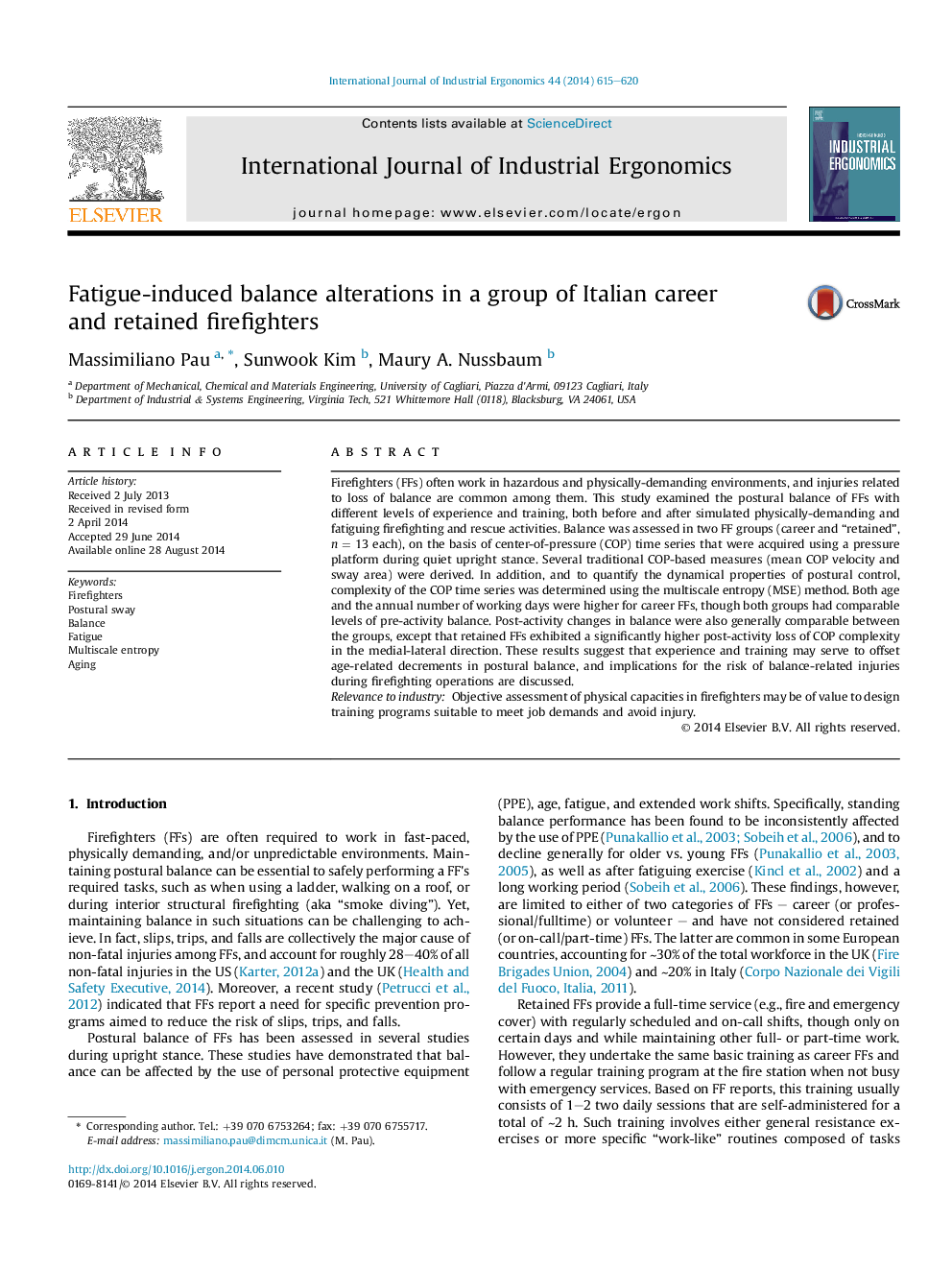| Article ID | Journal | Published Year | Pages | File Type |
|---|---|---|---|---|
| 1095920 | International Journal of Industrial Ergonomics | 2014 | 6 Pages |
•We analyzed the postural balance of career and retained firefighters.•Both groups had similar baseline balance despite age and experience differences.•Fatigue overall had mostly comparable effects on postural balance in the two groups.•Some evidence found for fatigue-related differences between groups.•Firefighting/rescue activities may offset age-related decrements in balance.
Firefighters (FFs) often work in hazardous and physically-demanding environments, and injuries related to loss of balance are common among them. This study examined the postural balance of FFs with different levels of experience and training, both before and after simulated physically-demanding and fatiguing firefighting and rescue activities. Balance was assessed in two FF groups (career and “retained”, n = 13 each), on the basis of center-of-pressure (COP) time series that were acquired using a pressure platform during quiet upright stance. Several traditional COP-based measures (mean COP velocity and sway area) were derived. In addition, and to quantify the dynamical properties of postural control, complexity of the COP time series was determined using the multiscale entropy (MSE) method. Both age and the annual number of working days were higher for career FFs, though both groups had comparable levels of pre-activity balance. Post-activity changes in balance were also generally comparable between the groups, except that retained FFs exhibited a significantly higher post-activity loss of COP complexity in the medial-lateral direction. These results suggest that experience and training may serve to offset age-related decrements in postural balance, and implications for the risk of balance-related injuries during firefighting operations are discussed.Relevance to industryObjective assessment of physical capacities in firefighters may be of value to design training programs suitable to meet job demands and avoid injury.
